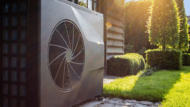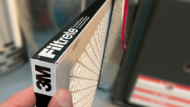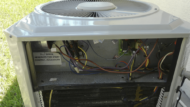If your air conditioning system was installed before 2010, there’s a good chance it relies on R22 refrigerant, also known as Freon. This refrigerant was the industry standard for decades in residential and commercial air conditioning systems. However, as of January 1, 2020, the Environmental Protection Agency (EPA) implemented a complete phase-out of R22 due to its environmental impact. This change affects millions of homeowners and property managers, especially in Los Angeles, where air conditioning is essential for year-round comfort.
Let’s dive into what the R22 ban means for your air conditioning system and the steps you can take to ensure your cooling needs are met without interruption.
Why Was R22 Banned?
R22 is a hydrochlorofluorocarbon (HCFC) that has been found to significantly contribute to ozone depletion and global warming. The EPA’s decision to phase out R22 aligns with the global goals established under the Montreal Protocol, an international treaty aimed at protecting the ozone layer by eliminating ozone-depleting substances. The phase-out is not merely regulatory; it represents a critical step toward environmental sustainability.
A stark statistic highlights the urgency of this action: HCFCs like R22 are 1,800 times more potent as greenhouse gases than carbon dioxide, according to the EPA. Transitioning away from R22 is crucial to minimizing harm to the planet.
How the Ban Impacts Homeowners in Los Angeles
For Angelenos, where summer heat waves are the norm, a functioning air conditioning system is non-negotiable. If your system still uses R22, the ban presents several challenges:
Rising Costs
The production and import of R22 are now prohibited in the United States. Existing supplies of recycled or reclaimed R22 are rapidly dwindling, causing prices to skyrocket. According to industry reports, the cost of R22 refrigerant has risen by over 200% since the phase-out began, making repairs increasingly expensive.
Limited Repair Options
As R22 becomes harder to find, HVAC technicians may face difficulties sourcing the refrigerant needed for repairs. This can lead to longer wait times, higher service fees, or even the inability to repair certain systems.
Outdated Equipment
Air conditioning systems that use R22 are often older and less energy-efficient. Even with minor repairs, these systems may not perform as effectively as newer models designed for modern refrigerants.
What Are Your Options?
If your system still relies on R22, it’s time to explore alternatives. Here are the top options to consider:
Retrofitting Your Current System
In some cases, your existing air conditioning system can be retrofitted to use a more environmentally friendly refrigerant, such as R410A. Retrofitting involves updating certain components of your system to ensure compatibility with the new refrigerant. This option can extend the life of your system and reduce its environmental impact.
However, retrofitting isn’t always feasible for older units. An experienced HVAC technician can assess your system to determine if this is a viable solution.
Upgrading to a New System
If your air conditioning unit is more than 10-15 years old, upgrading to a modern, energy-efficient system may be the best choice. New systems use eco-friendly refrigerants and are designed to operate at much higher efficiencies, saving you money on energy bills.
The U.S. Department of Energy estimates that upgrading to a high-efficiency air conditioning system can reduce cooling costs by 20% to 50%. Additionally, California homeowners may qualify for rebates and incentives to offset the initial cost of a new system.
Prioritizing Preventative Maintenance
Whether you retrofit or replace your system, regular maintenance is essential. Routine inspections can identify potential issues before they escalate, ensuring your system runs smoothly and efficiently. Cleaning coils, checking refrigerant levels, and inspecting connections can prolong your system’s life and improve performance.
Why Act Now?
Delaying action on your R22 system can lead to higher costs and inconvenience. Here’s why acting sooner rather than later is beneficial:
- Avoid Rising Costs: As R22 supplies dwindle, prices will only continue to rise.
- Prevent Emergency Breakdowns: Addressing potential issues now reduces the likelihood of a mid-summer breakdown.
- Take Advantage of Incentives: Many utility companies and programs, such as Tech Clean California, offer rebates for upgrading to energy-efficient systems.
Heat and Comfort in the LA Climate
Los Angeles residents are no strangers to prolonged heat waves, making air conditioning a critical necessity. With average summer highs frequently exceeding 90°F, having a reliable and efficient cooling system isn’t just a matter of comfort—it’s essential for health and safety. The EPA’s R22 ban, while environmentally necessary, poses unique challenges for Angelenos who depend heavily on air conditioning.
Investing in a modern system designed for California’s climate not only addresses the R22 issue but also prepares your home for years of reliable performance. High-efficiency systems can handle LA’s heat while reducing energy consumption, aligning with California’s broader goal of achieving carbon neutrality by 2045.
Frequently Asked Questions About the R22 Ban
Will my air conditioning system stop working immediately?
No, your system will continue to operate as long as it is functional and has R22 refrigerant available. However, as repairs become necessary, sourcing R22 will become increasingly difficult and costly.
How much does retrofitting cost?
The cost of retrofitting varies based on your system’s age and condition but typically ranges between $1,500 and $2,000. A professional evaluation can provide a more accurate estimate.
Are there financing options for new systems?
Yes, many HVAC companies and financial institutions offer financing plans to make upgrading more affordable. Additionally, government programs and utility rebates can help offset costs.
A Smooth Transition for Your Cooling Needs
Navigating the R22 ban doesn’t have to be overwhelming. Whether you choose to retrofit your current system or invest in a new one, addressing the issue now will save you time, money, and stress in the future.
Proactively upgrading to an energy-efficient system not only keeps your home comfortable but also contributes to a more sustainable future. With incentives and financing options available, there’s no better time to make the switch.







